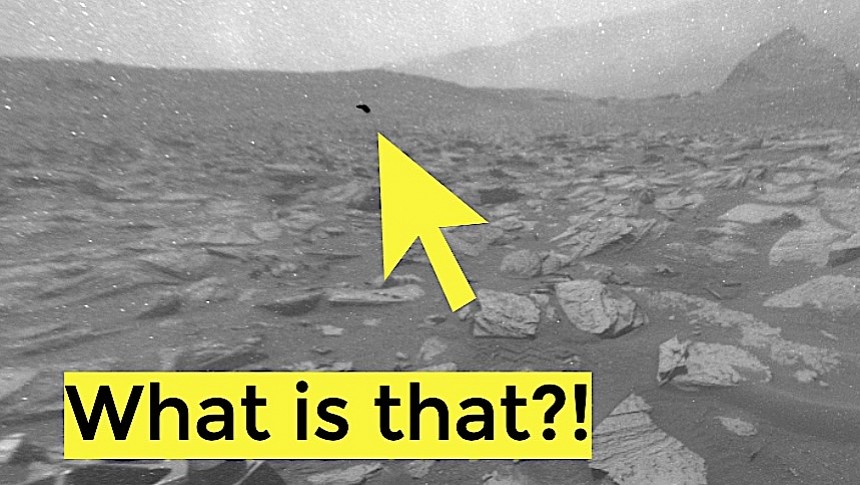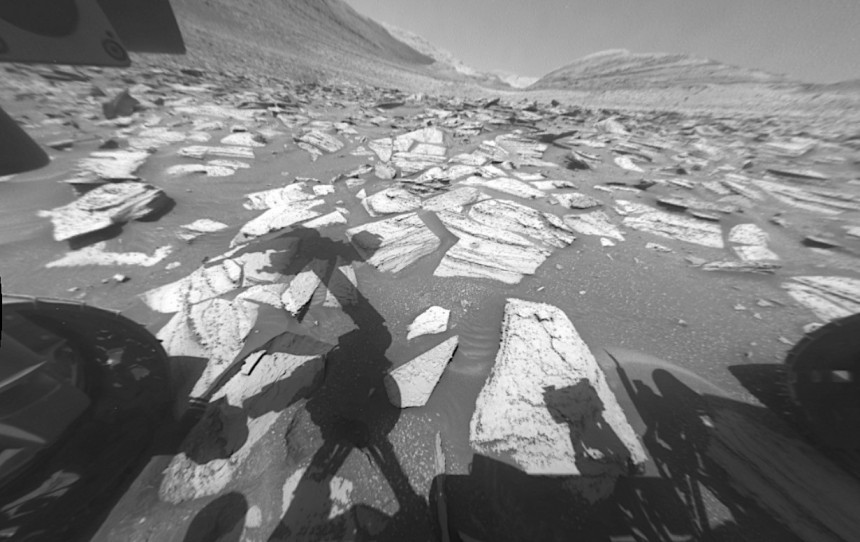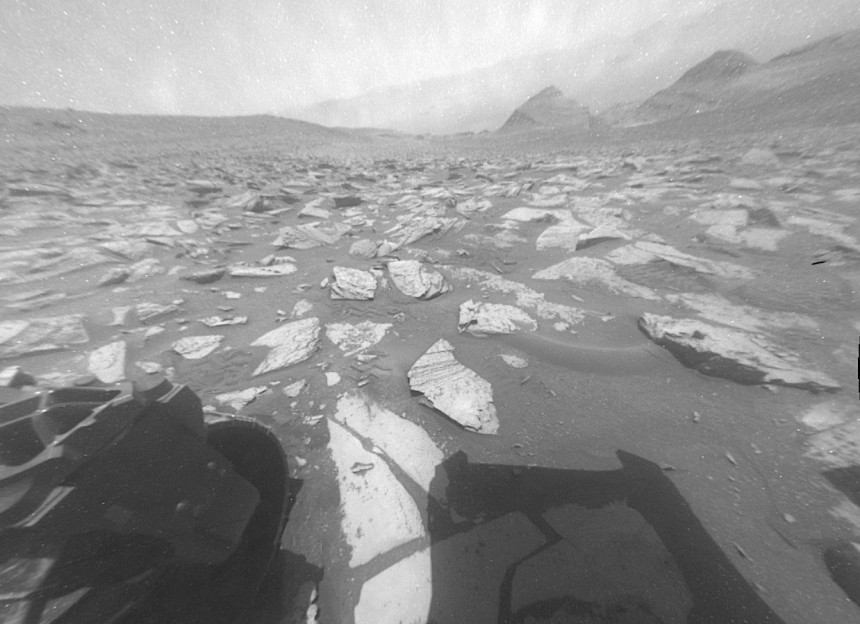The Curiosity rover is at the time of writing the oldest operational piece of technology on the surface of Mars. Having left Earth in 2011 with the goal of seeing whether the Red Planet is habitable, the machine exceeded all expectations in terms of durability and stamina – it was only meant to be operational for four years.
The rover departed our world with no less than 11 science instruments in tow, including cameras, spectrometers, sample analyzers, and environment monitoring sensors. They all helped the rover complete its main task and find "evidence of a past environment well suited to supporting microbial life" in the first 23 months it spent up there.
What that means is that the rover found in 2014 the first instance of organic molecules on Mars, and one year later it proved the existence of nitrogen on the surface.
It is now tasked with studying the geology and environment of the places it reaches up there, but from time to time it does seem to find the time to prove its more artistic nature.
Despite its longevity, Curiosity has somewhat been overshadowed by its younger and more sophisticated sibling, Perseverance, who arrived there in 2021. Yet the veteran still packs a punch, as made clear by this most recent release of stunning images captured on the neighboring planet.
Before getting into it, a bit of context. Because of the orbits of the Earth and Mars around the Sun, there are moments when direct communication between the two planets is not possible. NASA calls these moments, which take place every two years, Mars solar conjunctions, and they technically mean that the Sun is smack down between the two planets, not allowing a direct line of sight.
These moments usually last for about two weeks, and NASA has always chosen to stop direct communication with its hardware on Mars during this time (health check-ins are however being conducted).
Before this year's conjunction, which took place back in November, NASA instructed Curiosity to do something it has never done before: take 12 hours' worth of images of its surroundings, in the hopes it will catch clouds or dust devils moving into view.
Turns out the moment chosen for the experiment, the rover's 4,002nd Martian day, was not at all inspired, because nothing exciting happened on the surface of Mars. The experiment did, however, result in what may very well be the first true look at how a Martian day plays out from sunrise to sunset (5:30 AM to 5:30 PM local time, according to NASA).
There are two videos NASA shared with us this week, both of them black and white because they were compiled based on images snapped by the rover's Hazard-Avoidance Cameras (Hazcam). Those would be the eyes of the rover, the ones that allow operators here on Earth to spot hazards on the surface and avoid them.
Both videos have a total of 25 frames, and they capture the passage of time on an alien world in a way I personally have never seen before.
The first clip was recorded with the camera looking southeast along Gediz Vallis in the vicinity of Mount Sharp, where the rover has been slowly climbing since 2014. The second one shows the location northwest of the rover's position, down to the floor of the Gale Crater.
If you really pay attention to the two videos, you'll notice a few peculiar things about them, including white snow, artifacts, and bright flashes. There's an explanation for each of them, and aliens are not involved.
As per NASA, the white snow that can be seen in the second video as night descends onto the Martian surface is actually a collection of hot pixels, sensor noise that occurs when exposure time increases – in this case, it had reached more than a minute.
At one point, about halfway through the same second first video, the camera seems to capture a small black artifact to the left. That's not some piece of alien tech or a Martian crow, but nothing more than a cosmic ray hitting the camera sensor.
The bright flashes the camera captured toward the end of its mission are not the result of some explosion but the effect of the rover's own power systems interfering with the operation of the Hazcam image sensor.
Last but not least, the "speckled appearance of the images," more obvious in the video facing from where the rover came from, is owned to nothing more than the dust that has settled over time on the camera lenses.
So, despite a camera looking at the Martian wasteland for 12 straight hours, nothing truly amazing popped into view. The two videos, which can be seen here, do however paint a more comprehensive picture of a place that looks not unlike our own, and one day might just as well become our own.
What that means is that the rover found in 2014 the first instance of organic molecules on Mars, and one year later it proved the existence of nitrogen on the surface.
It is now tasked with studying the geology and environment of the places it reaches up there, but from time to time it does seem to find the time to prove its more artistic nature.
Despite its longevity, Curiosity has somewhat been overshadowed by its younger and more sophisticated sibling, Perseverance, who arrived there in 2021. Yet the veteran still packs a punch, as made clear by this most recent release of stunning images captured on the neighboring planet.
Before getting into it, a bit of context. Because of the orbits of the Earth and Mars around the Sun, there are moments when direct communication between the two planets is not possible. NASA calls these moments, which take place every two years, Mars solar conjunctions, and they technically mean that the Sun is smack down between the two planets, not allowing a direct line of sight.
These moments usually last for about two weeks, and NASA has always chosen to stop direct communication with its hardware on Mars during this time (health check-ins are however being conducted).
Turns out the moment chosen for the experiment, the rover's 4,002nd Martian day, was not at all inspired, because nothing exciting happened on the surface of Mars. The experiment did, however, result in what may very well be the first true look at how a Martian day plays out from sunrise to sunset (5:30 AM to 5:30 PM local time, according to NASA).
There are two videos NASA shared with us this week, both of them black and white because they were compiled based on images snapped by the rover's Hazard-Avoidance Cameras (Hazcam). Those would be the eyes of the rover, the ones that allow operators here on Earth to spot hazards on the surface and avoid them.
Both videos have a total of 25 frames, and they capture the passage of time on an alien world in a way I personally have never seen before.
The first clip was recorded with the camera looking southeast along Gediz Vallis in the vicinity of Mount Sharp, where the rover has been slowly climbing since 2014. The second one shows the location northwest of the rover's position, down to the floor of the Gale Crater.
If you really pay attention to the two videos, you'll notice a few peculiar things about them, including white snow, artifacts, and bright flashes. There's an explanation for each of them, and aliens are not involved.
At one point, about halfway through the same second first video, the camera seems to capture a small black artifact to the left. That's not some piece of alien tech or a Martian crow, but nothing more than a cosmic ray hitting the camera sensor.
The bright flashes the camera captured toward the end of its mission are not the result of some explosion but the effect of the rover's own power systems interfering with the operation of the Hazcam image sensor.
Last but not least, the "speckled appearance of the images," more obvious in the video facing from where the rover came from, is owned to nothing more than the dust that has settled over time on the camera lenses.
So, despite a camera looking at the Martian wasteland for 12 straight hours, nothing truly amazing popped into view. The two videos, which can be seen here, do however paint a more comprehensive picture of a place that looks not unlike our own, and one day might just as well become our own.









